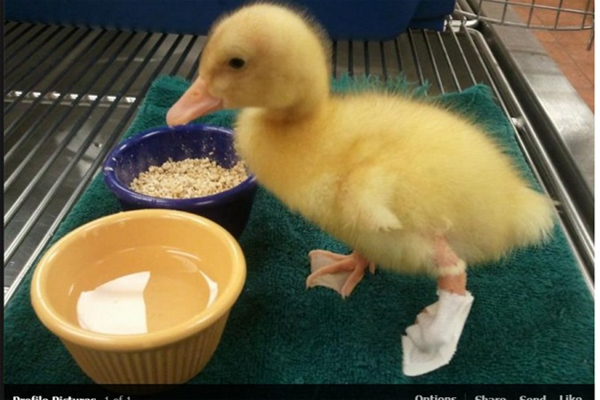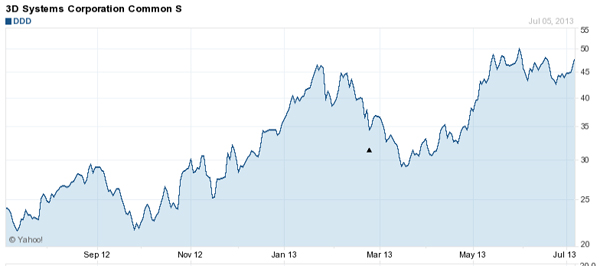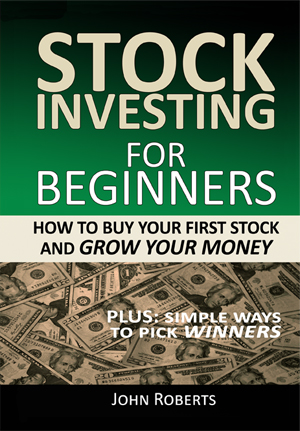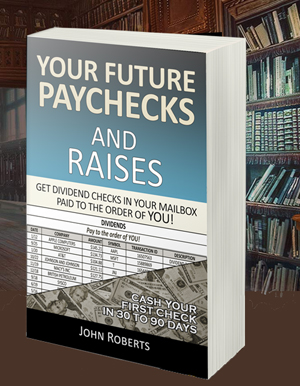Are Plastic Duck Feet Such A Crazy Investment?
Or have I just turned into another Quack investor?
If I were to suggest that investing in plastic duck feet was an investment with big profit potential, you well might think I had gone a bit daft.
Or perhaps I had watched that old classic movie The Graduate once too often – which, as you’ll recall, showed the confused graduate being told by an older family friend that the future was in “plastic.”
Yet in a sense I am saying just that, or more specifically, that investing in a game-changing technology that can produce plastic duck feet shows great promise.
So today I’m going to tell you a story about a little duck named Buttercup. And his webbed feet. And you can decide just how daft I have gone.
About Buttercup’s Plight
You see, Buttercup was born in a high school biology lab with two web feet.
OK, so far, so good.
But one of his little feet was backwards. So poor little Buttercup couldn’t swim and it was hard and painful to walk as well. And I suppose all the other ducks made fun of him as he swam and swam in circles, or fell over all the time when he walked on dry land.
As if that wasn’t bad enough, there was also the threat of infection as he constantly walked on the edge of his foot. So a veterinarian amputated it earlier this year, which left Buttercup in a bad way.
But some nice people at NovaCopy heard about Buttercup’s plight, and their engineers produced a new foot for him. They used 3D (three dimensional) printing technology to scan his remaining foot and literally print a matching plastic copy of it for him (or more technically stated, they created a permanent silicone rubber prosthesis).
I’ll tell you more about how things are going with Buttercup in a minute, but first, let’s get into the 3D printing.
Understanding 3D Printing
The easiest way to think of 3D printing is to think of the 2D printing that you do every day. By 2D printing I am referring to printing and copying on paper, which has two dimensions (2D) of width and height but not depth. In other words, what you do with sheets of paper.
You already know you can do 2D printing two different ways. You do it all of the time.
One way is where you have a paper that you want to copy and you put it in the copy machine, push the button and the machine scans the sheet of paper and prints an identical coy for you.
This is what the engineers did with Buttercup’s foot. They scanned his foot and printed a copy.
But you can do another type of 2D printing as well. Instead of copying an existing document, you can create a totally new document inside your computer.
This document does not exist anywhere physically – it is just created electronically inside your computer. Then you can print a real physical copy of it in the real world by sending the document to your printer to print.
The Mind Boggles At The Possibilities
The mind boggles at the possibilities here. For the first time in human history we have the ability to create virtually anything in our imaginations and computers, and press a button, and our imagination becomes reality — a real object we can touch and feel and use in the real, physical world.
I’ll give you one commercial use example of this with the automobile industry. Each year when they design their new car models, they do this in their computers. Then specialists in the past have had to spend months looking at the drawings and laboriously creating a life size model in clay as a prototype that they can walk around and look over to see how it will really look in the real world.
With 3D technology all of that clay modeling goes away. Once the new model is designed in the computer, the engineers can just press a button and the real full sized physical prototype is produced.
Or back to the way Buttercup’s new foot was produced for another real world example. It is no big stretch to imagine scanning a leg of an injured war veteran to create a realistic looking prosthetic for another leg that was lost in combat.
And the list goes on and on. You can see the possibilities.
Thoughts On Investment
So how does this shape up from an investment standpoint?
Well, the technology has been around for a while and I’ve followed it for a number of years. But it is still new and mature markets have not yet evolved.
One of the prominent companies in this technology is 3D Systems Corporation (NYSE: DDD). They are focused on manufacturing 3D printing and rapid prototyping printers (like the new car model example I mentioned) for both commercial and personal use. Their revenue recently grew 31% to $102.1 million from the prior year quarter.
While 31% is quite good, they have also done things like sold additional shares and done a 3 for 2 stock split to raise more funds for acquisitions. These things aren’t necessarily bad, and may be smart moves, but it can mess with your share values if you are an existing investor – as in make them go down.
That, coupled with the volatility of the stock as investors think this is the next Microsoft, then bail on bad news, then come back again with renewed hope, explains why the stock has swung up and down from around $18.33 a share to as high as $51.94 a share over the past year.
Which means to me that this is not an investment to go crazy with just yet.
And while I pay most attention to 3D Systems, there are other players as well. The main ones are Stratasys (NASDAQ: SSYS), EXONE CO (NASDAQ: XONE) and Hewlett-Packard Company (NYSE: HPQ).
Of all the other players, I’m most interested in Hewlett-Packard if they seriously get involved, and if they can end their string of management debacles.
As a consumer, I like HP, have bought their printers for years, and they have great distribution channels. They also have a $3 billion Research and Development budget which doesn’t hurt.
What I’m doing Right Now
My interest lies most strongly in 3D Systems if their stock comes back to a reasonable price. But I’m not jumping in right now because they are pretty pricey (see chart).
I would be interested in buying if the price comes back down to around $30 a share – where it was in March of this year. But buying at today’s prices near $50 is just too high.
I am seriously considering putting in a buy order at $31 a share – good for the next three months. Or put another way, if the stock goes down to $31 a share in the next three months, my buy order will automatically buy the shares for me.
But I won’t be buying at this price. If I get the stock at that price, fine. If not, no big deal. I’ll keep my bus stop mentality on full bore. That is to say, stock investments are like sitting at a bus stop. If I miss the bus, no big deal, there will be another one in five minutes.
And if I can’t get a stock at a good price, no big deal. There will be another good stock investment soon enough.
Don’t Go Crazy With This Yet
So you might want to keep an eye on this stock and technology. A company in this area really does seem to have the possibility of becoming another Microsoft.
But it’s just too early to tell who the winner is – so keep your powder dry and only buy on a serious pullback. And then only a small portion of you portfolio. This is still speculative.
And I’ll let you know if I put in the $31 buy order in and how that works out.
Now back to Buttercup
OK, so now back to our hero duck Buttercup and how he’s doing. Well, recently Buttercup was fitted with his new foot and he’s learning to walk with it and doing just fine.

By the way, Buttercup has a Facebook page so you might want to go on over and say hi and give him your emotional support. You can visit Buttercup at Go Say Hi To Buttercup.
And click the Facebook Like Button if you feel so inclined. He’ll take that as emotional duck support – and I bet pretty soon all the other ducks will stop making fun of him.
And isn’t that just great.
Gosh, I just love a technology duck story with a happy ending, don’t you?
And speaking of happy endings, if you’re just getting your feet wet in investing, and want to build a financial future, you just might be interested in my latest book Stock Investing For Beginners.
I promise it’s a fast, easy read. And when you are done, you will know how to buy your first stock. You can check it out here.
To your health and prosperity – John Roberts





